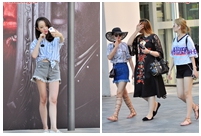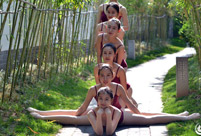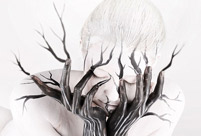

In the 21st century it’s harder for large corporations to offer disruptive breakthroughs. Disruptive innovations seem to be coming from startups – Telsa for automobiles, Uber for taxis, Airbnb for hotel rentals, Netflix for video rentals and Facebook for media.
What’s holding large companies back? Here are four reasons:
First, companies bought into the false premise that they exist to maximize shareholder value – which said “keep the stock price high.” As a consequence, corporations used metrics like return on net assets (RONA), return on capital deployed, and internal rate of return (IRR) to measure efficiency. These metrics make it difficult for a company that wants to invest in long-term innovation. It‘s a lot easier to get these numbers to look great by outsourcing everything, getting assets off the balance sheet and only investing in things that pay off fast. To do that companies jettisoned internal R&D labs, outsourced manufacturing and cut long term investment. These resulting business models made them look incredibly profitable.
Second, the leaders of these companies tended to be those who excelled at finance, supply chain or production. They knew how to execute the current business model.
Intel under their last two CEOs delivered more revenue and profit than any ever before. They could point to record investment in R&D for more expensive chip fabs, yet today the writing is on the wall that Intel’s leading days are over. Why?
Over the last decade, Intel missed two important disruptive trends. First, the shift to mobile devices versus desktop computers, meant that Intel’s power hungry x86 processors weren’t suitable. ARM, a competitor, not only had a better, much lower power processor, but a better business model – they licensed their architecture to other companies, who designed their own products. Intel attempted to compete, (and actually owned an ARM license) but ended up falling victim to a classic failure of ignoring a low-end disruptor and hobbling their own chances by deciding not cannibalize their own very profitable x86 business. All of Intel’s resources - fabs, manufacturing strategies, and most importantly executive mindset were geared towards large, expensive x86 processors, not low-cost mobile cores of someone else’s design.
The result, Intel just laid off 12,000 people, 11% of their company.
But it’s not over for Intel. Their most profitable segment are very high-end processors used in data centers in servers and the cloud. Today that’s built on the premise that an x86 architecture is the one best suited for big data. It’s becoming clear that extracting intelligence from that big data requires machine learning architectures that are better implemented with non x86 chips from companies like NVidia. It’s possible that by the end of this decade history might repeat itself in Intel’s most profitable segment.
The third reason why companies find it hard to innovate is the explosive shifts in technology, platforms and markets that has occurred in the last 15 years. Personal computers moving to mobile devices, life science breakthroughs in therapeutics, diagnostics, devices and digital health, and new markets like China emerged as consumer and suppliers.
Which brings us to the fourth reason it’s harder for large corporations to offer disruptive breakthroughs: startups.
For the first seventy-five years of the 20th century, when capital for new ventures was scarce, the smartest engineering talent went to corporate R&D labs.
But starting in the last quarter of that century and accelerating in this one, a new form of financing – risk capital (angel and venture capital) emerged. Risk capital has provided financing for new ideas in the form of startups. Capital was returned to these investors in liquidity events (originally public offerings, but today mostly acquisitions.)
Startups have realized that large companies are vulnerable because of the very things that have made them large and profitable: by focusing on maximizing shareholder return, they’ve jettisoned their ability to do disruptive innovation at speed and scale. In contrast, startups operate with speed and urgency, making decisions with incomplete information. They’re better than at identifying customer needs/problem and finding product/market fit by pivoting rapidly. Their size lets them adopt flatter and agile organizational structures while providing incentives that reward risk-taking and collaboration.
Startups re-envision how an industry can operate and grow, they focus on better value propositions, and on the low-end undercut cost structures, resulting in customer migration. But at the high-end they create products and services that never existed before.
As we’ve seen corporations are very good at maintaining, defending and refining existing business models and they’re pretty good at extending existing models by identifying adjacencies. But corporations are weak, and have become weaker, in identifying new disruption opportunities.
Innovation can come from inside the corporation; by adoption of Lean Startup language and methods, developing intrapreneurship, and foster innovation-driving behaviors such as GE’s Fastwork program. And it can foster innovation from the outside by promoting open innovation and buying startup-driven innovation. Google has bought close to 160 companies in the last decade. It’s acquisition of Android may have been the biggest bargain in corporate history.
So to succeed, corporations must re-think and then re-invent their corporate innovation model, replacing a static execution model with one where innovation is continuous. This requires a corporate culture, organizational structure, and employee incentives that reward innovation. It requires establishing acceptable risk level, and innovation KPIs.
And it requires understand the difference between executing the existing business model, extending the business model and disrupting the business model.
The author is a consulting associate professor at Stanford University.
 Five made-in-China hi-tech breakthroughs
Five made-in-China hi-tech breakthroughs Beijing Style: Hot pants
Beijing Style: Hot pants HK-Zhuhai-Macao Bridge to open to traffic
HK-Zhuhai-Macao Bridge to open to traffic China opens its first combined transport service to Nepal
China opens its first combined transport service to Nepal Students take stylish bikini graduations photos
Students take stylish bikini graduations photos Charming dancing students pose for graduation photos
Charming dancing students pose for graduation photos Guizhou, Yunnan section of Shanghai-Kunming railway connected
Guizhou, Yunnan section of Shanghai-Kunming railway connected Naked models transformed into landscapes, birds and even DRAGONS by body painting artist
Naked models transformed into landscapes, birds and even DRAGONS by body painting artist World’s biggest cruise ship Harmony of the Seas to start maiden voyage
World’s biggest cruise ship Harmony of the Seas to start maiden voyage Top 20 hottest women in the world in 2014
Top 20 hottest women in the world in 2014 Top 10 hardest languages to learn
Top 10 hardest languages to learn 10 Chinese female stars with most beautiful faces
10 Chinese female stars with most beautiful faces China’s Top 10 Unique Bridges, Highways and Roads
China’s Top 10 Unique Bridges, Highways and Roads Abortive careers
Abortive careers West traps itself by politicizing lone wolf
West traps itself by politicizing lone wolf Lenders threaten borrowers with nude pics
Lenders threaten borrowers with nude pics Local dog meat festival shouldn’t be canceled forcefully
Local dog meat festival shouldn’t be canceled forcefullyDay|Week